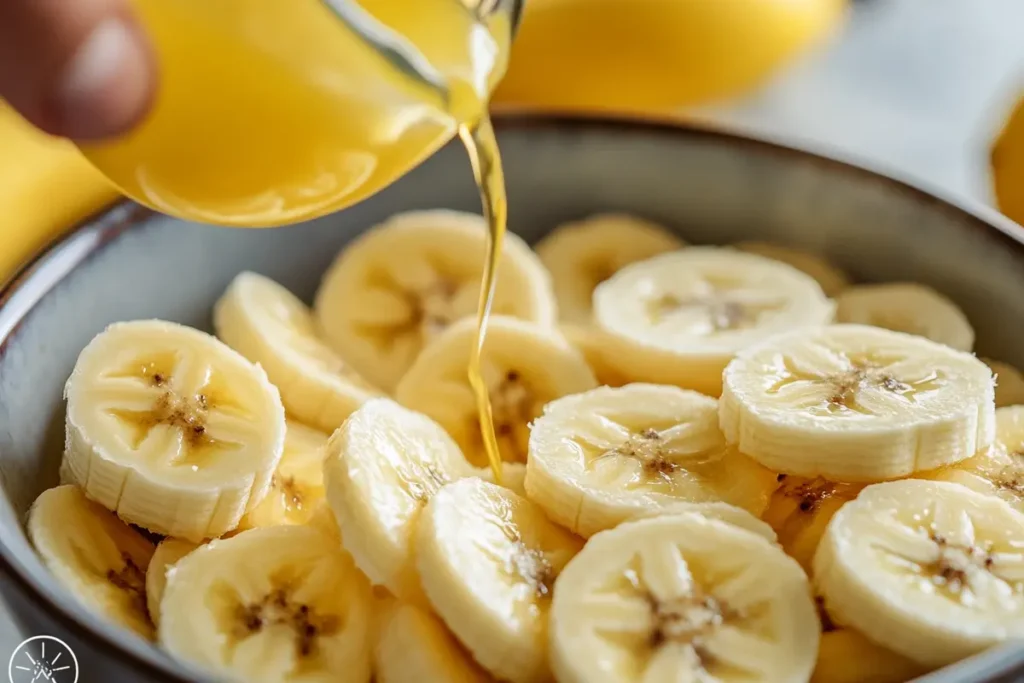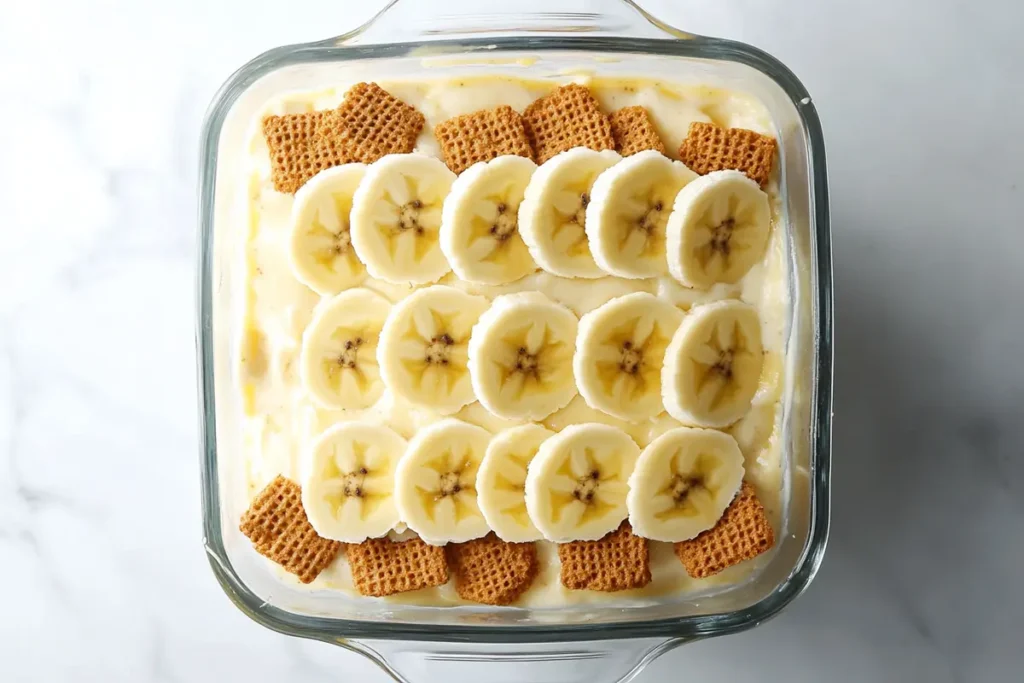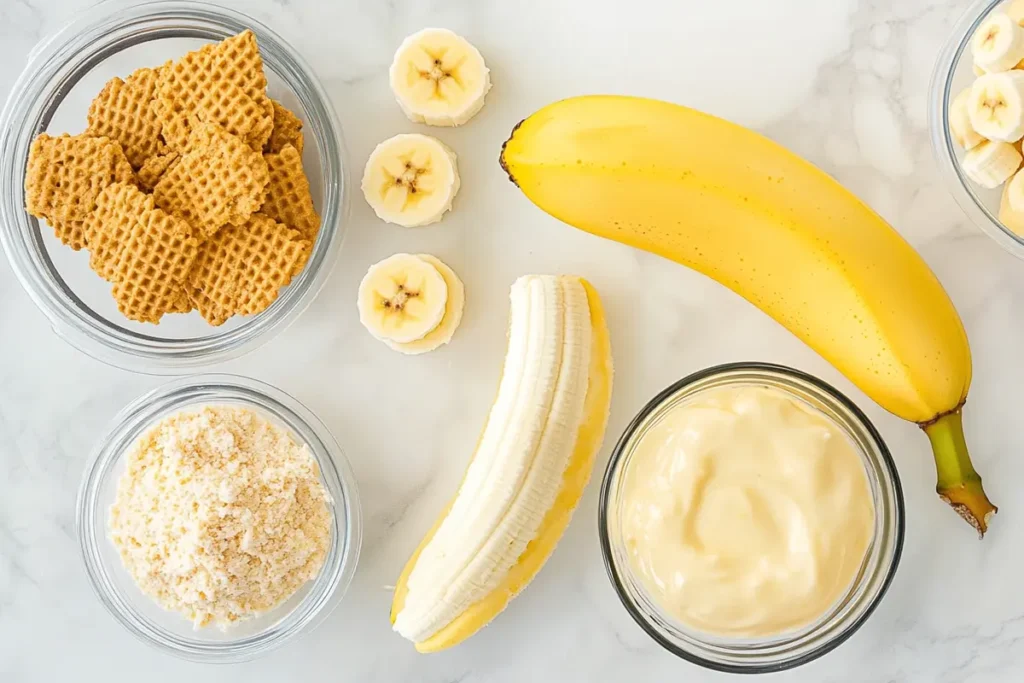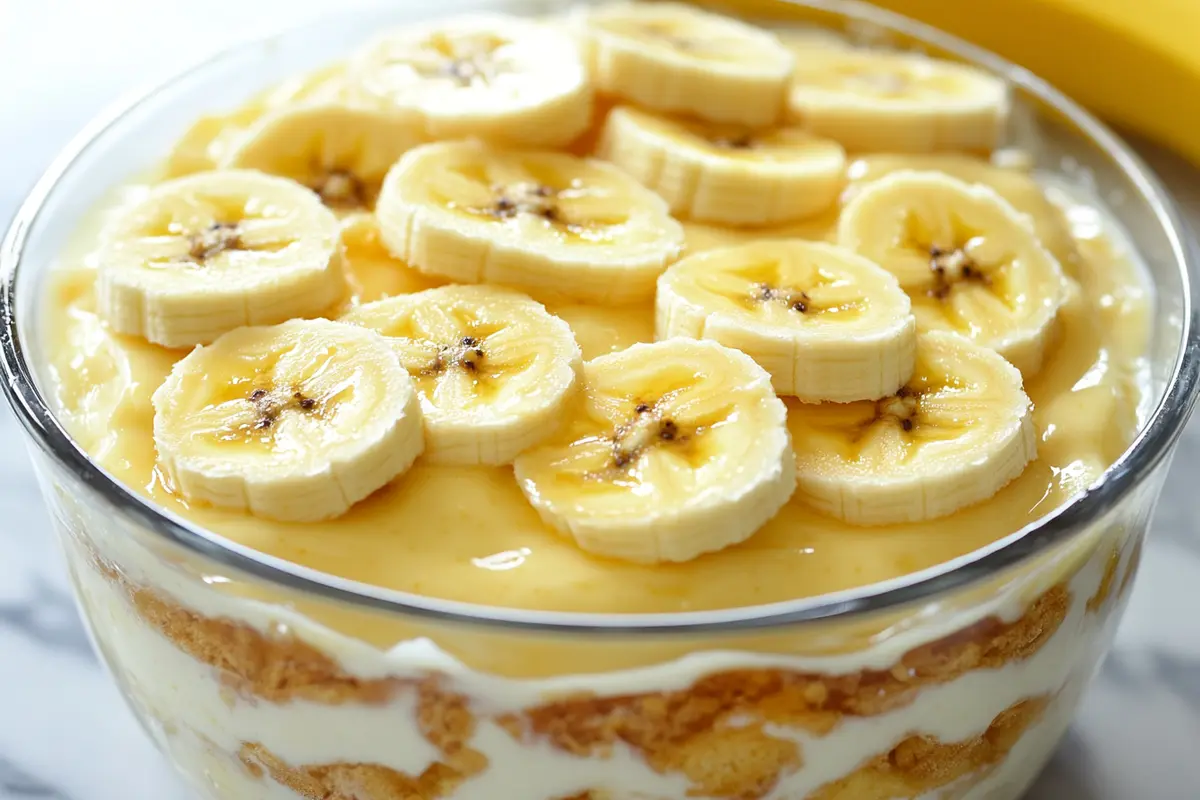Banana pudding is a beloved dessert, but one common challenge is preventing the bananas from turning brown and mushy. Therefore, the question becomes, how do you keep bananas from rotting in banana pudding? This article will explore various methods and tips to maintain the freshness and appeal of your banana pudding. We will delve into the science behind banana browning and practical solutions to keep your bananas looking and tasting their best. It is important to note that the key is preventing the enzyme reaction that causes browning.flavor of the banana pudding.
Understanding Enzymatic Browning
Enzymatic browning is the primary reason why bananas turn brown. When bananas are cut, their cells are damaged. This releases PPO enzymes, which then react with phenols and oxygen in the air. This reaction results in the formation of melanins, the dark brown pigments that cause the discoloration. Therefore, controlling this enzymatic reaction is key to keeping your bananas from browning. Understanding the science can guide you in your efforts to prevent browning. For example, knowing that oxygen is essential to the process will help you choose the best options.
The Role of Oxygen
Oxygen is a crucial component in the enzymatic browning reaction. It is the agent that allows the PPO enzymes to convert phenols into melanins. Therefore, the less exposure to oxygen, the slower the browning process. This is why tightly wrapping cut bananas or submerging them in a liquid helps to minimize browning. However, complete exclusion of oxygen is difficult. Therefore, other methods to slow the reaction are also necessary.
Methods to Prevent Bananas from Browning

Several effective methods can help keep bananas from rotting in banana pudding. These range from applying protective coatings to adjusting the preparation techniques. These can be used alone or in combination. Also, consider what flavors and textures you are going for when selecting your method. Therefore, here are a few common strategies:
- Acidic Coating: As mentioned, brushing or dipping bananas in citrus juice inhibits enzymatic browning.
- Sugar Syrup: Coating the bananas with a sugar syrup can act as a barrier against oxygen. It adds a bit of sweetness.
- Plastic Wrap: Tightly wrapping bananas in plastic wrap can limit their exposure to air. This can slow down the browning process.
- Layering: Strategically layering the bananas in the pudding can minimize direct exposure to air.
- Timing: Adding bananas to the pudding shortly before serving can prevent browning for a little while.
Using Acidic Coatings: Lemon and Lime Juice
Citrus juices are popular options for preventing banana browning because of their citric acid content. A simple mixture of lemon or lime juice and water can effectively coat bananas without overpowering their flavor. To do this, mix a small amount of lemon or lime juice with some water in a bowl. Then, toss your banana slices gently in the mixture, ensuring each slice is covered. Excess juice can be patted off before adding the bananas to your pudding. Therefore, this method uses a very low level of acid, while slowing down the browning. For example, a simple light coating can keep bananas fresh for several hours.
Other Acidic Options
While lemon and lime juice are the most common, other acidic substances can also be used to prevent browning. Pineapple juice, which contains ascorbic acid (Vitamin C), is another good option. Similarly, a very diluted vinegar solution could also work, although the flavor might be less desirable. For example, a splash of pineapple juice adds a subtle tropical touch. However, it is important to consider how the additional flavors will affect the taste of the pudding. Therefore, choose your acid carefully.
The Role of Sugar
Sugar plays an important role in maintaining the quality of the bananas in your pudding. It works in a few ways to help keep the bananas from browning and turning to mush. Therefore, we will look at how sugar works to prevent banana browning in detail. This can include how you make the pudding itself, or sugar as a protective layer.
Sugar Syrup Coating
Coating banana slices with a sugar syrup can create a protective layer against oxygen. A simple syrup (equal parts water and sugar, heated until dissolved) can be brushed or drizzled over the bananas. This method is a good option when you want to add a bit of sweetness and a protective barrier. Furthermore, the syrup creates a barrier and also slightly dehydrates the outer layer of the banana. Therefore, this also reduces the available water for enzymatic reactions. For instance, a light coating of simple syrup can keep bananas looking fresh.
Sugar in the Pudding Itself
The sugar content in the pudding itself can also influence how quickly the bananas brown. The sugar content affects water activity, thus reducing the activity of PPO enzymes. However, this effect is subtle and might not be sufficient to prevent browning completely. Therefore, it is best to combine it with other techniques.
Proper Layering Techniques

The way you layer bananas within the pudding can significantly impact their browning. Layering them strategically can minimize oxygen exposure and thus keep them fresh. In addition, how you place them within the pudding itself can greatly impact the level of oxidation you will experience. Therefore, we need to review best layering practices.
How to Minimize Exposure
When layering, ensure that the bananas are fully surrounded by the pudding or other ingredients. Place a layer of pudding at the bottom of the dish, followed by a layer of bananas. Then, cover the bananas with more pudding. For example, layering the bananas between the pudding and wafers prevents direct exposure to the air. Also, avoid overcrowding the dish. Therefore, strategic layering can significantly slow down the browning.
The Impact of Air Pockets
Air pockets within the pudding can accelerate the browning of bananas. They allow oxygen to reach the sliced bananas, speeding up the enzymatic reaction. Therefore, when layering, ensure that the pudding is spread evenly and that there are no large gaps. This creates a much more stable environment for the bananas. Additionally, consider using a spatula or spoon to fill any air pockets with extra pudding. Therefore, be sure to layer with care.
The Importance of Timing

Timing is key to preventing bananas from browning in banana pudding. The closer you add the bananas to serving time, the less time they have to brown. In addition, if you prepare all the other components first, the bananas can be added as the last item. Therefore, think about when you add your bananas. This is an important part of preserving the freshness of your pudding.
Adding Bananas Just Before Serving
Adding banana slices to the pudding shortly before serving is the most effective method to minimize browning. This ensures they look fresh and appealing. If you are planning to make the pudding ahead of time, prepare all the other ingredients but do not add the bananas until right before serving. Therefore, planning ahead is key when timing is important. For instance, prepare the pudding and other components and keep them chilled, then add the bananas just before serving.
Preparing Other Components in Advance
Preparing other components in advance allows you to add the bananas closer to serving time. This reduces how long the bananas are sitting in the pudding. The less time they sit, the less time they have to brown. Therefore, consider preparing the pudding mixture and other ingredients beforehand, and then add the bananas at the last minute. For example, make the pudding the day before, keep it chilled, and add the bananas just before serving.
Choosing the Right Bananas
The ripeness of the bananas you use can also influence how quickly they brown in banana pudding. Therefore, understanding how ripeness affects browning is critical. It can also help you make better choices when selecting bananas. Also, consider the final texture and flavor you are looking for.
Ripeness and Browning Rate
Overripe bananas tend to brown faster in banana pudding. They have a higher level of PPO enzymes, and their cells are more fragile. Therefore, using bananas that are just ripe or slightly underripe is better. These will brown slower compared to very ripe bananas. However, underripe bananas may have a slightly less sweet flavor. Therefore, the best choice is bananas that are ripe, but firm.
Selecting Bananas for Pudding
When choosing bananas for pudding, look for ones that are firm, yellow, and have very few brown spots. Avoid using bananas that are very ripe or already have mushy sections. Therefore, select bananas that are at the peak of ripeness but not overly so. This will ensure they taste their best and will not brown too quickly.
Storage and Handling Tips
Proper storage and handling of banana pudding can also help prevent the bananas from browning. Careful storage ensures the pudding will maintain its quality for longer. In addition, how you handle the pudding once it is made can greatly impact the overall quality. Therefore, think about proper handling methods.
Refrigerating Banana Pudding
Refrigerating banana pudding is crucial for slowing down the browning process. The cold temperature reduces the activity of PPO enzymes. Furthermore, it also slows down the growth of any bacteria. Therefore, refrigerate your pudding promptly after making it. However, refrigeration alone will not completely prevent browning, so other techniques are still necessary.
Avoiding Frequent Opening
Opening and closing the container can increase exposure to oxygen. Therefore, this can speed up the browning of bananas in your pudding. Whenever possible, avoid opening the container frequently. This will minimize oxygen exposure, keeping your bananas fresher for longer. Therefore, be sure to keep your pudding in a tightly sealed container.
Practical Tips for Making Banana Pudding
Making perfect banana pudding requires a combination of the right ingredients and preparation techniques. Here are a few practical tips:
- Use Firm Bananas: Choose bananas that are ripe but firm, avoiding overripe ones.
- Acidic Coating: Lightly coat banana slices in lemon or lime juice.
- Layer Strategically: Layer bananas in the pudding, ensuring they are covered by other ingredients.
- Add Bananas Last: Add bananas just before serving or as close to serving as possible.
- Refrigerate Properly: Keep the pudding refrigerated until serving time.
- Minimize Exposure: Avoid opening the container too frequently to minimize exposure to air.
Experimentation and Adjustments
Every recipe and kitchen environment is unique. Therefore, it is a good idea to experiment with these tips and find the methods that work best for you. You can adjust the level of acidity, sugar, and timing to your liking. In addition, be sure to taste the pudding at all stages and adjust as necessary. For example, a bit more sugar or acid may work to your advantage. Therefore, experimentation is key to developing your own perfect banana pudding recipe.
Alternatives to Traditional Banana Pudding
For those looking for alternatives to traditional banana pudding, other options can also minimize browning issues. Some of these options include making smaller batches, using a different type of fruit, or trying alternative ingredients. These can all minimize or completely avoid the browning issues of traditional banana pudding. Therefore, here are a few ideas to consider.
Individual Serving Sizes
Making banana pudding in individual serving sizes can help to minimize waste. It can also allow for better control of browning issues. For example, small ramekins or cups can be filled with pudding and a single serving of bananas. This will help ensure that the bananas are as fresh as possible. In addition, it can be a nice way to present the dish. Therefore, consider smaller portions to limit browning.
Using Other Fruits
Other fruits can be used in place of bananas in pudding to avoid browning issues. For example, berries, peaches, or mangoes can be used to create a different flavor profile. These fruits are less prone to enzymatic browning. Therefore, this is a wonderful option if you want to avoid browning altogether.
Conclusion
In conclusion, how do you keep bananas from rotting in banana pudding? By understanding the science behind enzymatic browning and employing various techniques, you can maintain the freshness and appeal of your banana pudding. From using acidic coatings and sugar syrups to strategically layering and timing the addition of bananas, multiple strategies can work alone or in combination. These simple steps will help you achieve great results. Therefore, by following these tips you can enjoy a delicious and fresh banana pudding every time.
The Science and Art of Making Banana Pudding
Making banana pudding is both a science and an art. By understanding the science behind the browning process, we can utilize the techniques to minimize the browning of bananas in our pudding. However, with a little care and attention to detail, you can create a delicious and appealing dessert. Therefore, always think about all these points when making your next banana pudding. In addition, try to experiment to find the best combination of techniques that works for you.
Frequently Asked Questions
How to make bananas stay fresh in banana pudding?
To make bananas stay fresh in banana pudding, coat them with lemon or lime juice to slow down browning. Also, layer them strategically in the pudding to minimize air exposure. Lastly, add the bananas as close to serving time as possible. These steps will help keep them fresh for a longer period.
How to keep bananas from turning brown in a banana cream pie?
The methods to keep bananas from turning brown in a banana cream pie are similar to those used for banana pudding. Coating banana slices with lemon or lime juice and layering them well within the pie will minimize browning. Therefore, this should keep your pie looking fresh and appealing. In addition, consider adding the bananas close to serving time if you can.
How long before bananas turn brown in banana pudding?
The time it takes for bananas to turn brown in banana pudding can vary depending on various factors. If they are simply sitting exposed to the air, they may turn brown within a few minutes. However, if coated with an acidic substance and layered carefully, they can remain relatively fresh for a few hours. Therefore, this will depend on how you prepared them.
What is the best way to keep bananas from rotting?
The best way to keep bananas from rotting is to store them properly, avoid bruising, and use them within a reasonable timeframe. If you know you are going to use them in a pudding or other dish, peel them and either use them immediately or store them by coating them with acid and plastic wrap. Therefore, you should make sure to plan your banana use. In addition, you should handle them with care to avoid bruising.

